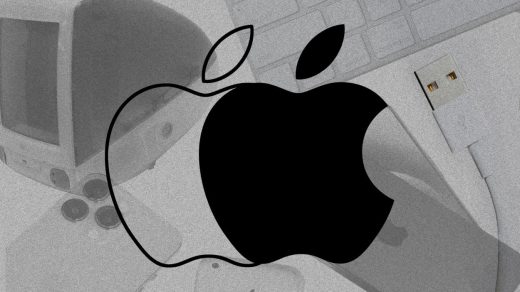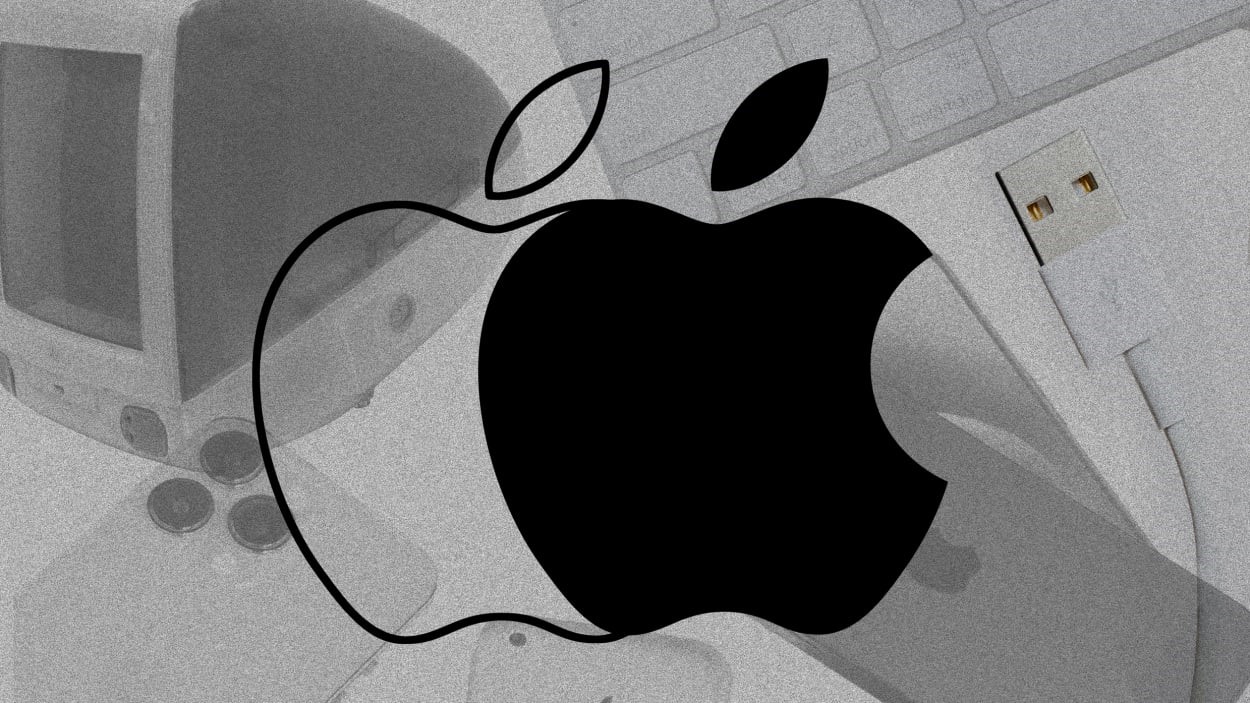How Apple walks the tightrope between being open and closed
By Ross Rubin
Before the Chromebook’s “Everything” key, the PC’s Windows key, and even the Mac’s cloverleaf-like “Command” key, the Apple II keyboard’s space bar was flanked by two modifier keys bearing Apple’s iconic logomark. On the left sat a black silhouette of the apple known “Closed Apple,” and on the right, a hollow outline called “Open Apple.”
In the decades since the Apple II’s heyday, the dichotomy of these two logomarks has taken on symbolic significance—not primarily in the “open source” versus “closed source” software sense, but more broadly in how Apple’s products play well with those created elsewhere. Even at the nadir of the Mac’s market share in the late 1990s, Apple’s support could provide a powerful halo effect on connectivity-related standards, such as USB and Wi-Fi. And when Apple moved on from a technology, it helped drive the abandonment of one-time mainstays like floppy drives and dial-up modems.
Now, with the immense popularity of the iPhone (particularly in the U.S.), Apple’s technology adoption decisions have carried huge weight for standards such as NFC, Qi, and Matter, while the company’s decisions to go its own way with technologies like Lightning, AirDrop, and iMessage has caused headaches for those outside its ecosystem.
Cracking open a closed door
In the Mac’s early days, just about everything about it was closed and proprietary, though it sometimes offered advantages over the PC’s approach. For example, even when PCs came around to adopting the same 3.5-inch floppy disks that the Mac introduced to the market, the Mac still couldn’t read them, since its incompatible formatting scheme allowed for more data on the same disks. To this day, the Mac can’t write to volumes formatted with NTFS, the prevailing file system for Windows hard drives, without third-party software. Early Macs also used different and often proprietary standards for keyboards and mice (ADB), hard drives (SCSI), networking (LocalTalk/AppleTalk), and internal expansion cards (NuBus).
Over time, though, Apple adopted standards that were more prevalent in the PC world. The original 1998 iMac began Apple’s long, twisting history with USB as the company used the then-new technology to ditch floppy drives, ADB ports, and SCSI in a single blow. Apple anlso integrated industry-standard TCP/IP networking used to connect to the internet and wound down support for its own AppleTalk networking. It supported PCI and PCIe expansion cards in its highest-end desktops. And it was one of the first to offer Wi-Fi in its laptops, although Intel soon helped popularize the technology broadly in the Windows world. When Macs shifted to the Intel processors also used by PCs, Apple’s Boot Camp software enabled installing Windows directly onto Mac hardware, creating a dual-boot setup. (Running Windows locally on an Apple silicon-based Mac requires third-party virtualization software such as Parallels Desktop.)
Apple also increasingly shared more technologies that it had developed. On the software side, these included the open source WebKit HTML rendering engine and Swift programming language. Apple.com now lists nine open source software projects that the company leads and anther nine that it contributes to. On the hardware side, the company contributed its work on FireWire/IEEE 1394 protocol and its successor Thunderbolt to open standards.
Sharing power
As evidenced by its most recent iPhone introduction, Apple is in some ways more open (again, in the interoperability sense) than ever, particularly when it comes to hardware and networking. Beyond its active role in standards organizations for essential technologies, such as Wi-Fi and Bluetooth, the iPhone 15’s retiring of the Lightning connector in favor of USB-C brings the popular standard to Apple’s three main computing platforms—iPhone, iPad, and Mac—and enables faster and simpler connections among them. Apple contributed its MagSafe technology, used on iPhones for a range of differentiating accessories, to the Wireless Power Consortium, which is responsible for the Qi wireless charging standard. It’s been incorporated into the Qi2 standard, which is set to show up in non-Apple devices in the coming months.
In years past, Apple shunned home networking initiatives such as the Digital Living Network Alliance and the MirrorLink video casting standard in favor of its own AirPlay. But while it still embraces AirPlay and has extended its functionality with SharePlay, Apple is now a leading proponent of the Matter home network interoperability standard, which is also backed by ecosystem rivals Amazon and Google. The iPhone 15 Pro even includes support for Thread, Matter’s low-power mesh network.
Like Google and Microsoft, Apple also promotes the passkey standard for password-free logins. And while AirPods support only owns Apple’s fast-pairing and device location technologies, Apple’s Beats earbuds brand supports both Apple’s and Google’s standards for both features.
In a surprise move, Apple recently committed to supporting RCS—the text-messaging standard embraced by wireless carriers and Google—on the iPhone starting in 2024, resulting in richer and more secure cross-platform messaging. But it also says that iMessage will remain an Apple-exclusive service, keeping apps built on top of iMessage, such as games, exclusive to Apple users. While other technologies that would remove friction between iOS and Android remain only on Apple devices, such as the AirDrop peer-to-peer file-sharing standard and the new NameDrop contact-sharing feature, Apple has finally allowed those on other platforms to join—but not initiate—FaceTime calls via the web.
For Apple’s growing services businesses, the company has developed Apple TV apps for smart TV platforms from Amazon, Roku, Samsung, and even Google TV-based products such as the Nvidia Shield. As with FaceTime calls, though, Android tablet and phone users must go to the web to get their Ted Lasso. Indeed, Apple publishes just six apps in the Google Play store for Android phones and tablets. Four of them involve apps it acquired, one facilitates migration to iOS, and one is designed to help Android users detect surreptitiously placed Apple Tags. In contrast, Google publishes over 50 apps for iOS and iPadOS, another 11 just for the iPhone, and three each for the Apple Watch and Apple TV.
Friction and frustration
If there’s been a theme to when Apple embraces industry standards and when it chooses to not share its toys, the company seems to see interoperability standards for devices (Matter, USB, Qi2, and the just-announced Airo door lock standard) as serving its interests. But it resists standards that reduce friction between humans using those devices, keeping iMessage and AirDrop proprietary.
Webkit, Thunderbolt, USB-C, Matter, and Qi2 are all examples of technologies where Apple gave up a platform advantage and even contributed some of its own work for the benefits of market expansion and a better experience for its users, Similarly, the company will have to be convinced that expanding iMessage or AirDrop support would yield more value—either through market expansion or avoiding regulatory attention—than whatever benefit it receives from tempting frustrated Android users to switch to iPhones. Until that fulcrum is reached, those technologies won’t be part of the open Apple.
(71)



